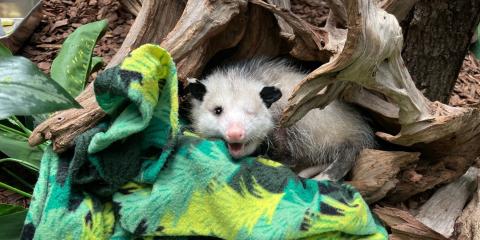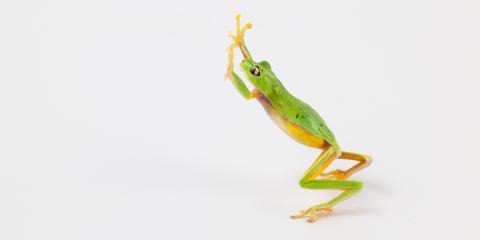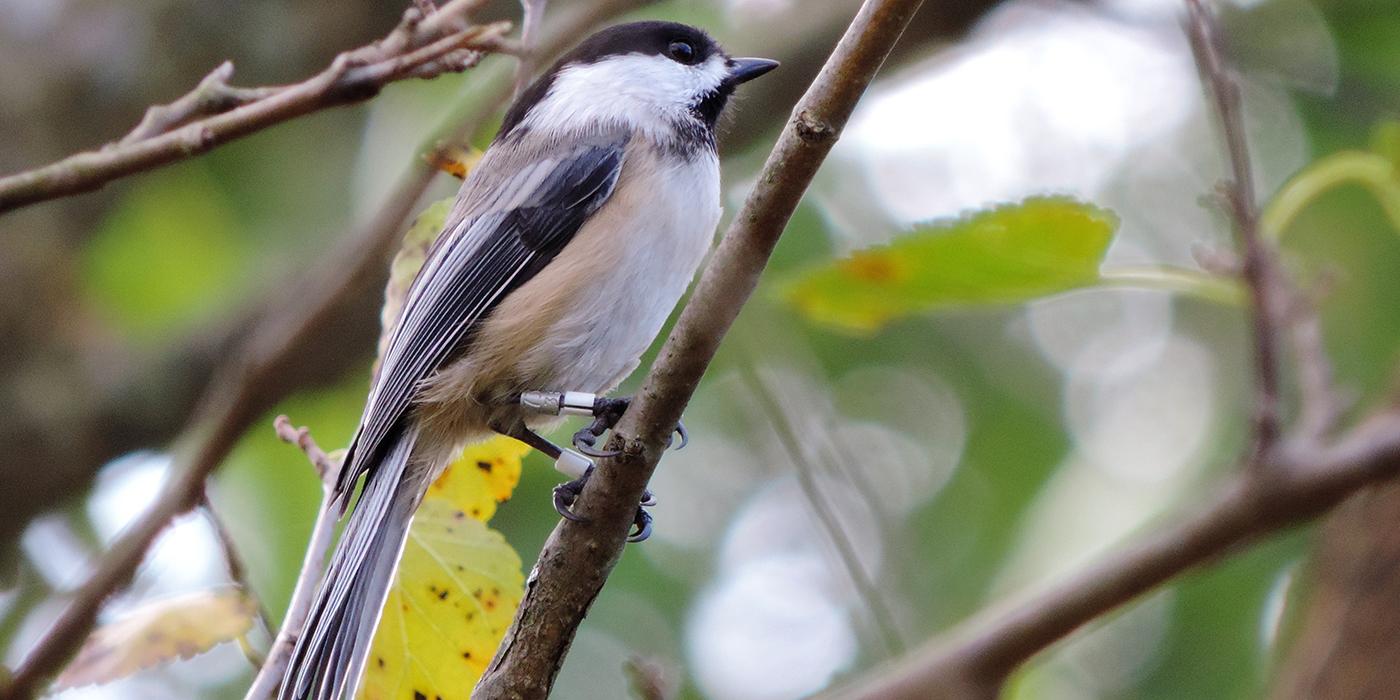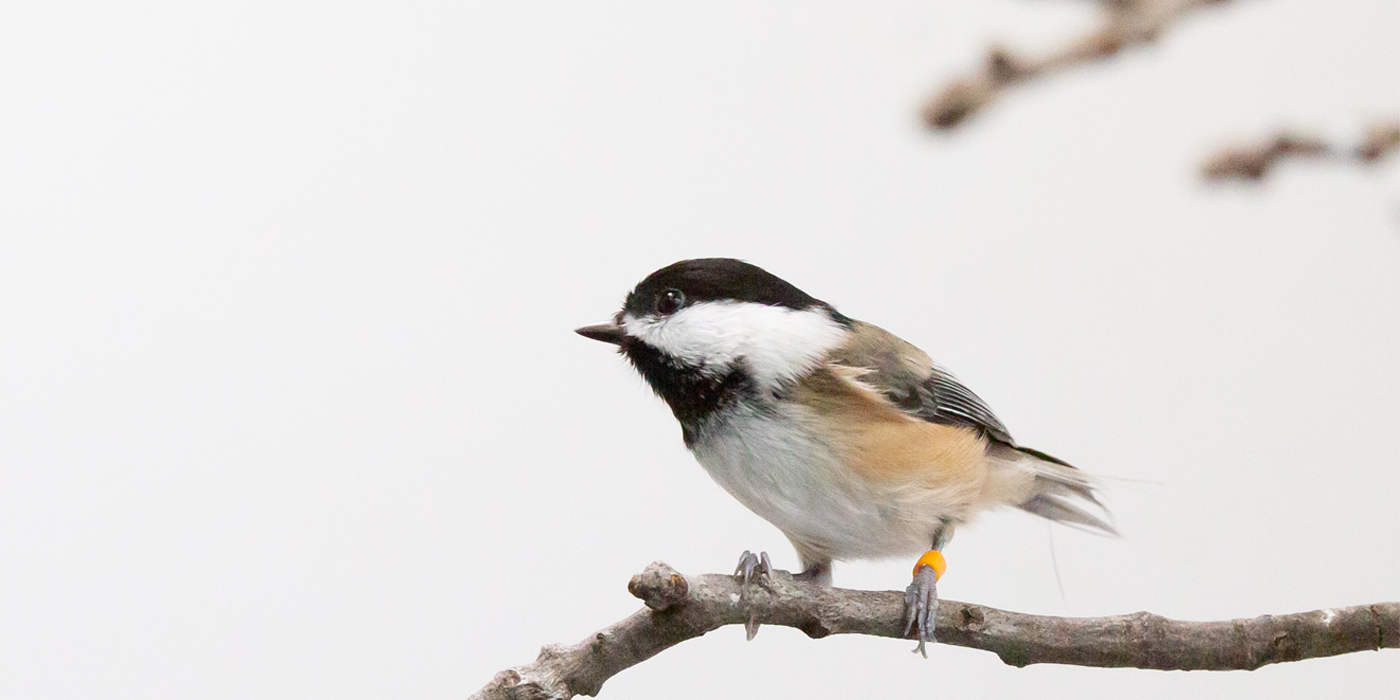Physical Description
Size
Native Habitat
Chickadees like open wood and deciduous forests. They thrive in backyards, cottonwood groves and willow thickets. In harsh winter weather, small flocks of black-capped chickadees are sometimes seen in dense pine forests.
Black-capped chickadees can be found across North America, ranging from Alaska through eastern Canada, and spreading southward into the northern parts of the United States. The southern border of their range is slowly creeping north as the climate warms.
Lifespan
Communication
Black-capped chickadees produce a dazzling array of calls. Adults can make as many as 16 different calls, all with different meanings. The call for which they are named in English — "chick-a-dee-dee-dee" — is far more complex than it sounds, with information encoded in each note. Generally the more “dees” that ring out, the greater the threat a predator poses. They also sing a highly recognizable "fee-bee" song. They sing more in the spring than in any other time of year.
Other species of songbirds, especially migrants moving through an area, tend to tag along with chickadee flocks. They listen for the chickadee feeding calls to find food and for chickadee alarm calls to keep them safe.
Food/Eating Habits
Chickadees love bird feeders, especially ones with sunflower seeds, suet and peanuts. However, more than half of their food throughout the year consists of insects, spiders, caterpillars, larvae and insect eggs. They have even been known to scavenge on dead deer, skunks and fish. They also eat vegetation, including berries and seeds.
Chickadees hide huge amounts of food for the winter months—in the fall they can store up to 1,000 seeds a day or 80,000 seeds a season, jamming them anywhere they can fit. To keep track of all these seeds, they can replace old neurons with new ones, overwriting old memories with new ones. A chickadee’s hippocampus—the part of its brain responsible for spatial memory—is larger in chickadees that live in places with colder, harsher weather. The hippocampus actually shrinks in the spring when food is easily available and grows again when it’s time to survive the winter.
Sleep Habits
Social Structure
Reproduction and Development
Black-capped chickadees appear to be monogamous. Scientists aren’t yet sure if they mate for life. The male does not display to the female before mating, though he will fly after her. The pair works together to dig out a nest hollow in a dead tree, snag, a rotting stump or a nest box. They can also nest in abandoned downy woodpecker nest holes, and they rarely use the same nest site from one year to another. The mother uses moss and other coarse vegetation to build the nest, which she lines with soft material including fur. Females lay one to 13 eggs which hatch after 12-13 days. Nestlings fledge after 12-16 days.
The mother lays a clutch of between one and 13 white speckled eggs, though typically she lays between six and eight. The mother sits on the eggs for 12 to 13 days until they hatch, while the father brings her food. The chicks stay in the nest for 14 to 18 days after hatching. The family then leaves the nest but will stay together as a group until the young chickadees are five to six weeks old.
Parents feed their nestlings mostly caterpillars and spiders. Spiders provide taurine, a nutrient that is important for chickadee brain formation.
Conservation Efforts
Help this Species
- Be a smart consumer. Choose products made with sustainable ingredients, such as Smithsonian certified Bird Friendly coffees, which support farmers striving to limit their impact on wildlife and habitat.
- Practice ecotourism by being an advocate for the environment when you’re on vacation. During your travels, support, visit or volunteer with organizations that protect wildlife. Shop smart too! Avoid buying products made from animals, which could support poaching and the illegal wildlife trade.
- Be a responsible cat owner, and keep cats indoors or under restraint when outside. Never release animals that have been kept as pets into the wild.
- Conservation starts with you! Join a citizen science project, such as FrogWatch or Neighborhood Nestwatch, where you can help collect valuable data for scientists. Encourage your friends and family to get involved too.
- Plant native flowers in your garden to help feed resident and migrating pollinators. You'll make your lawn beautiful and help wildlife at the same time!
Animal News

Remembering Basil, Our Virginia Opossum



